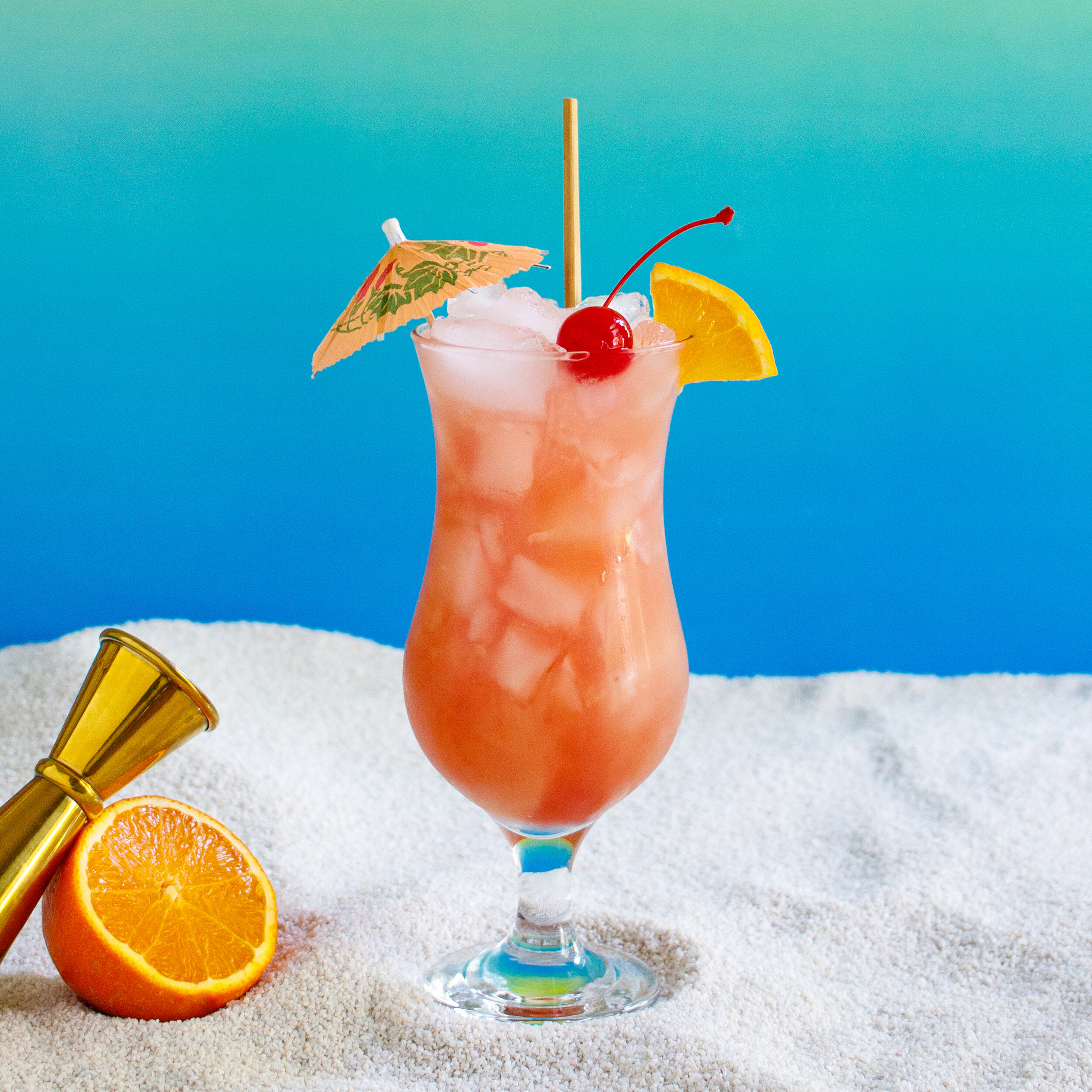2 oz. Amaretto
1 oz. Fresh lemon juice
½ of a fresh large egg white (or ½ oz of Pasteurized egg whites if you prefer)
Garnish: Good quality cocktail Cherries and a few dashes of Angostura bitters
Combine all of the ingredients in a shaker and “dry” shake without ice for 5 seconds. Add ice and shake again for 15 seconds. Strain into a chilled rocks glass filled with ice and garnish.
No-one knows for sure who first came up with the recipe for the Amaretto Sour, but we do know that it was created somewhere in the USA, sometime in the 1970s, when Italian liquors were starting to become fashionable in America.
Italians had been trying to introduce their spirits to an American audience for years, but it seemed that the bitterness of many Italian spirits was too much for most Americans in the 70s, who preferred their alcohol on the sweet side. Campari and the Negroni cocktail, for example, had a really hard time squeezing into the American market, but thankfully for Italy, Americans found the sweet nutty flavor of Amaretto to be very easy to drink.
Amaretto (Italian for "a little bitter) is a sweet, slightly bitter, almond flavored liqueur traditionally made by soaking apricot kernels in brandy. Today it can also be made with peach stones, sweet almonds, or bitter almonds.
While we don’t know who or where or when the amaretto sour was invented, we do know that in the 70s the recipe would have been as simple as mixing amaretto with ready mixed bar sour mix. Such a simple recipe could have come from anywhere and it’s highly likely that multiple bars started selling them independently of one another and the popularity spread until they were ubiquitous in the 1980s. They remained popular in the 90s but eventually fell out of favor. Today though, they’re actually starting to make a bit of a comeback, but most of the new-fangled recipes that bars are serving today mix the amaretto with whiskey to increase the alcohol content and balance the sweetness. The recipe above contains only amaretto, but instead of sour mix, it calls for fresh lemon juice and egg white. Since amaretto is sweet enough on its own, no sour mix is necessary.




